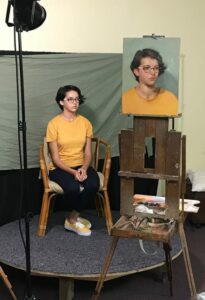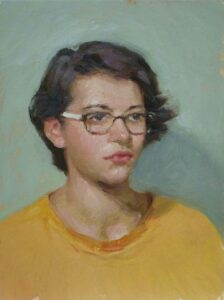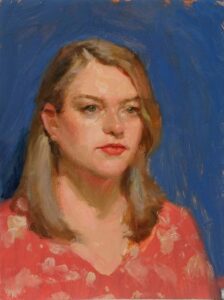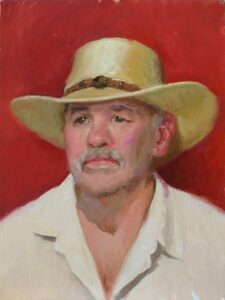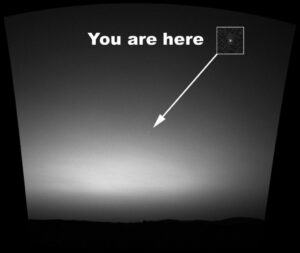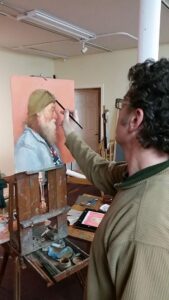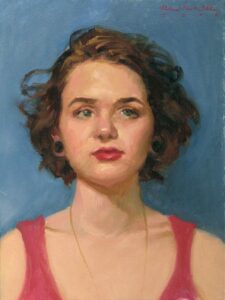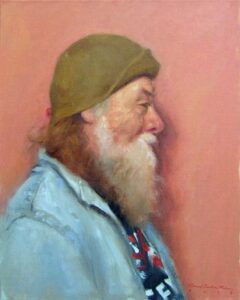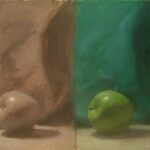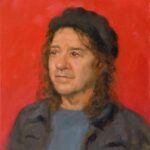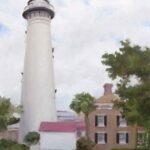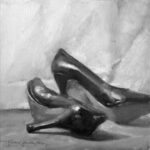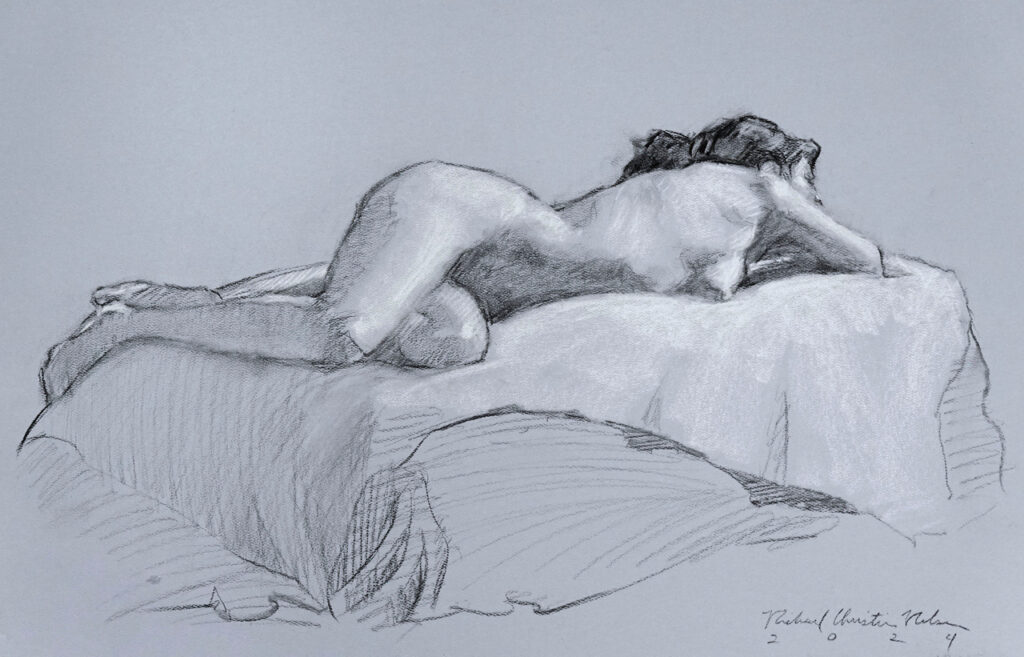
15″ x 23″
I believe Richard Schmid said that most problems with paintings are due to drawing. Most of us start out drawing but often, as we begin painting, we don’t circle back to drawing much.
I was fortunate to study drawing principles, such as perspective and anatomy, in art school in the ’80s in Detroit, Michigan. However once I began painting a lot, I did not draw much and even began to feel that drawing was becoming a weakness I could mask with the occasional lucky shape, splashy brushwork and such.
Fortunately, I was asked to do a series of charcoal portraits around 2007, and since then have done about a thousand of them! These have helped me to regain some confidence in drawing. They are usually done from my own photos, which I set up as though the person is sitting near.
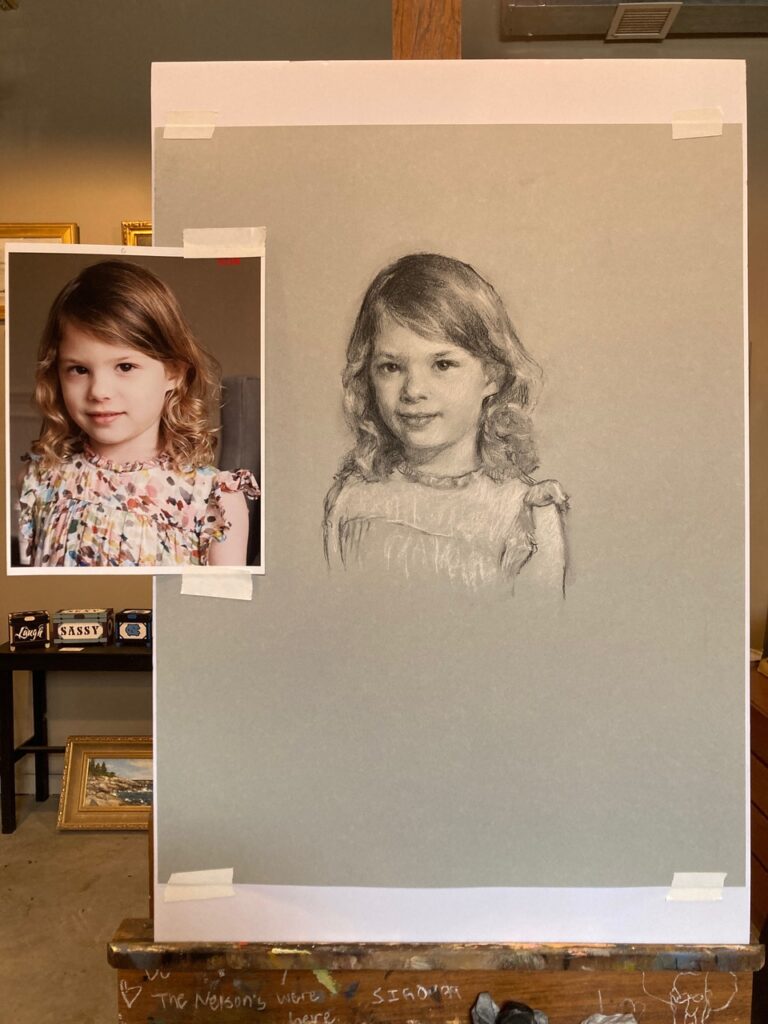

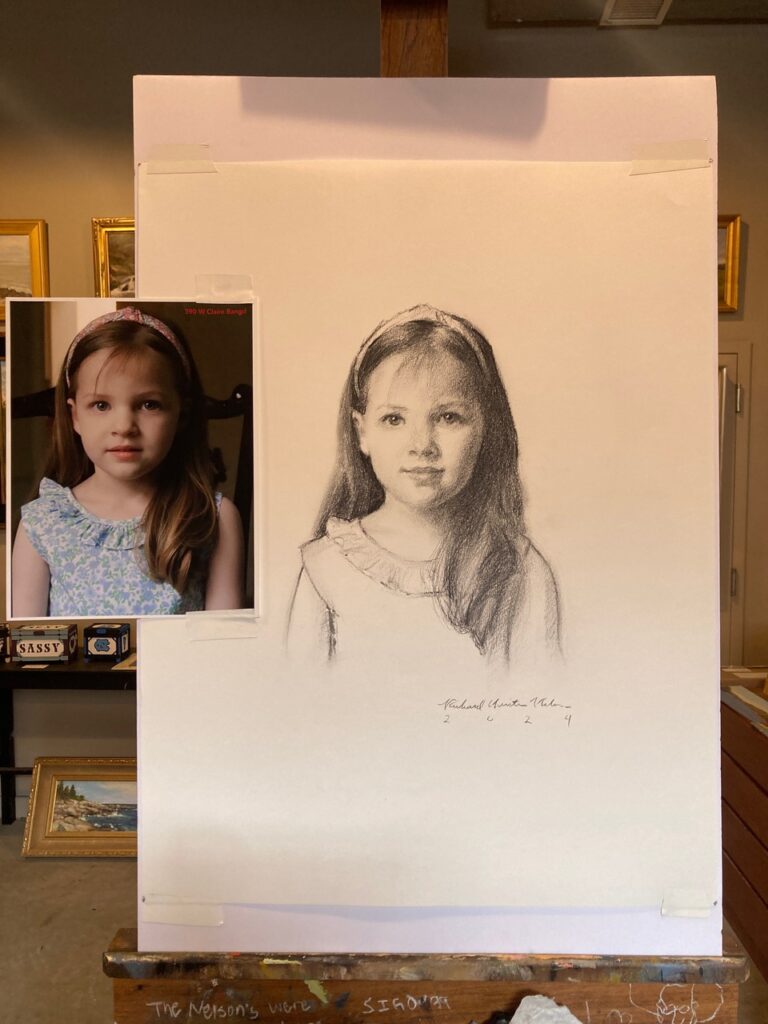
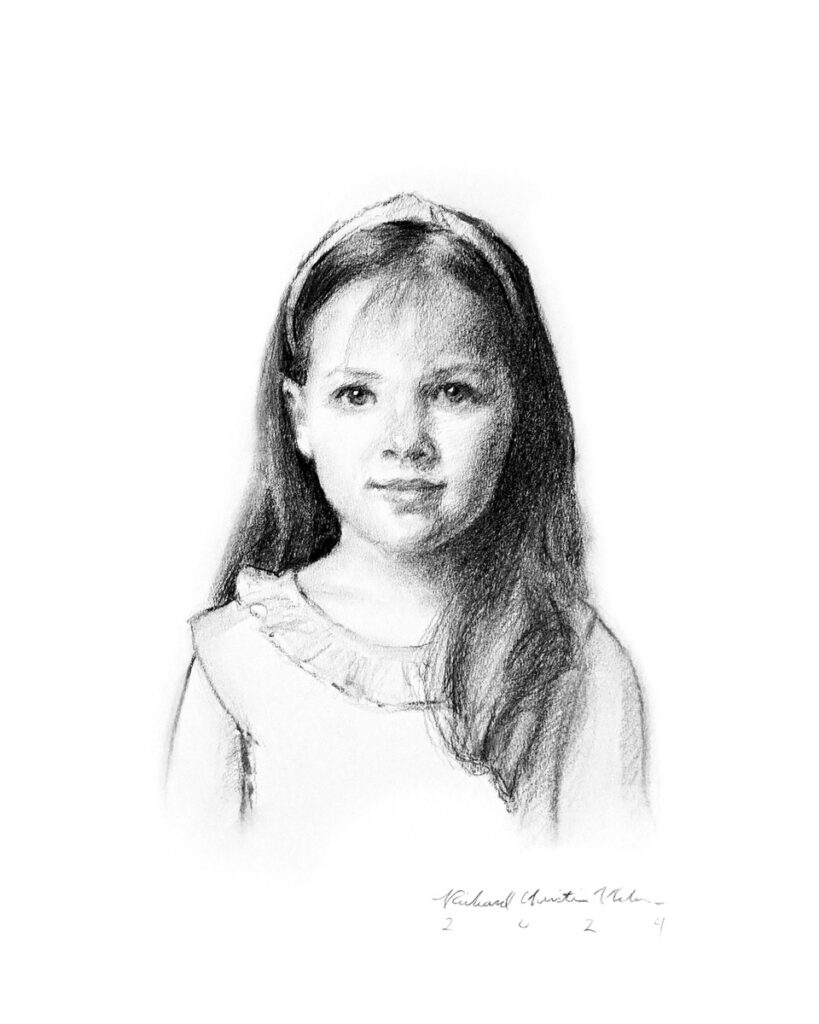
This brings me back to Richard Schmid’s point. I think what he meant is that very often what is required to “bring a painting home” is accurate drawing, along with excellent values, color, brushwork, etc.
It is confidence in drawing which helps to capture details that can really help elevate a painting. Richard Schmid was very accurate in his “drawing” of things like leaves or other details in his work, even if they were supporting characters in the overall composition.
To be clear, to me drawing is getting accurate shapes in my work. I’m not interested in minute detail of rendering every eyelash or thread or leaf or whatever. I try to continue improving shapes throughout the drawing or painting process. I don’t “get a perfect drawing” and then fill in between the lines.
As you can see in the comparison of the block in photos and the final paintings below, it is drawing that helps to “bring home” the finished paintings; placing the shapes of the head and background, features, highlights and such correctly. This makes for a decent result at our three hour, Wednesday Night Head Study group. (We’ve been getting friends and neighbors to sit for us most Wednesdays since 2013!)
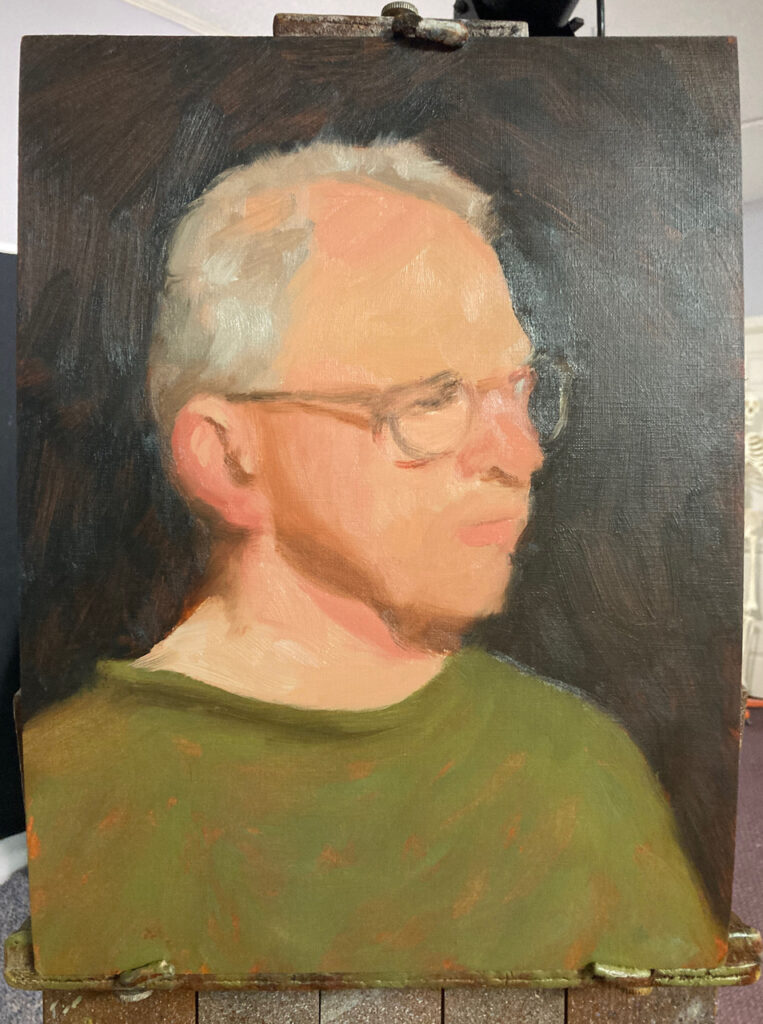
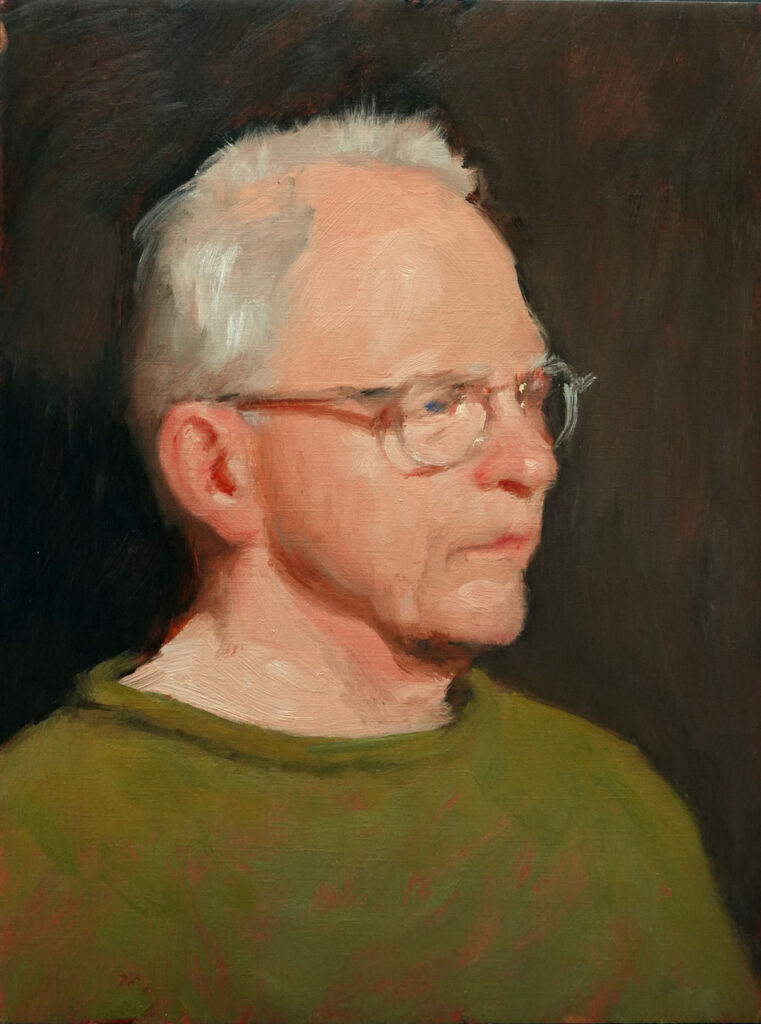
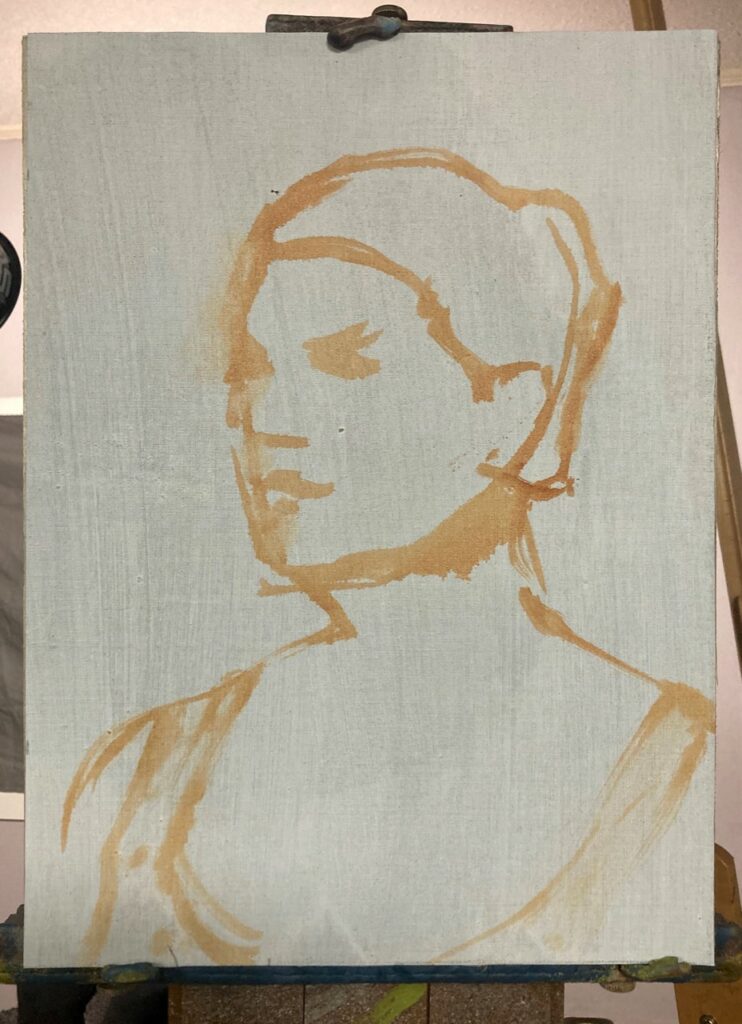
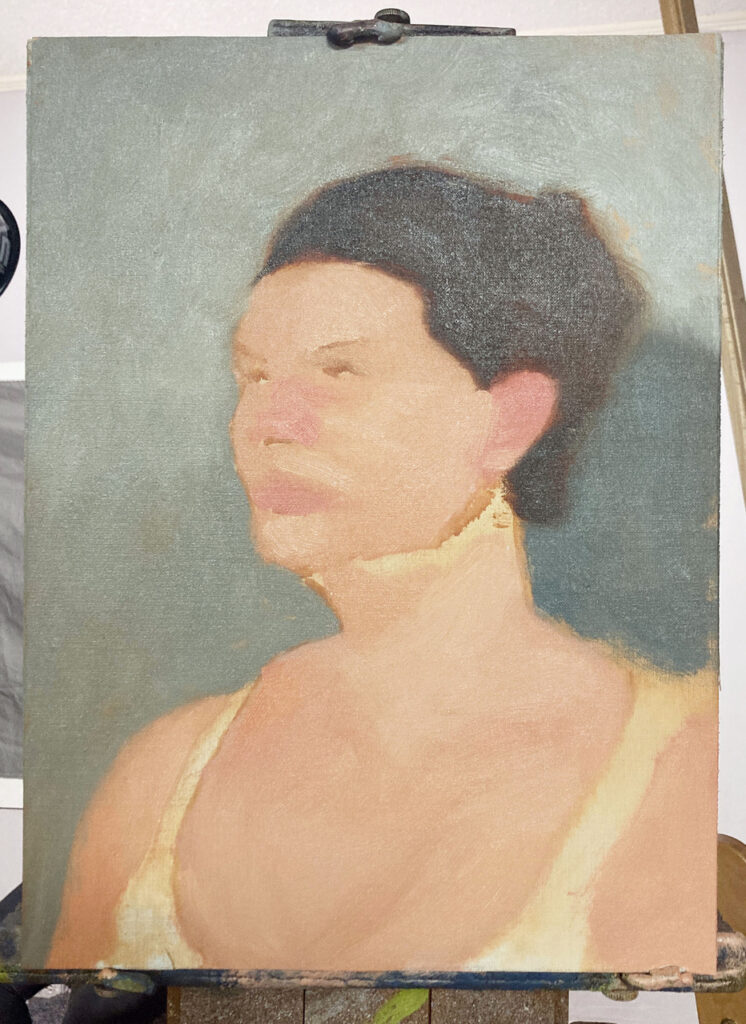
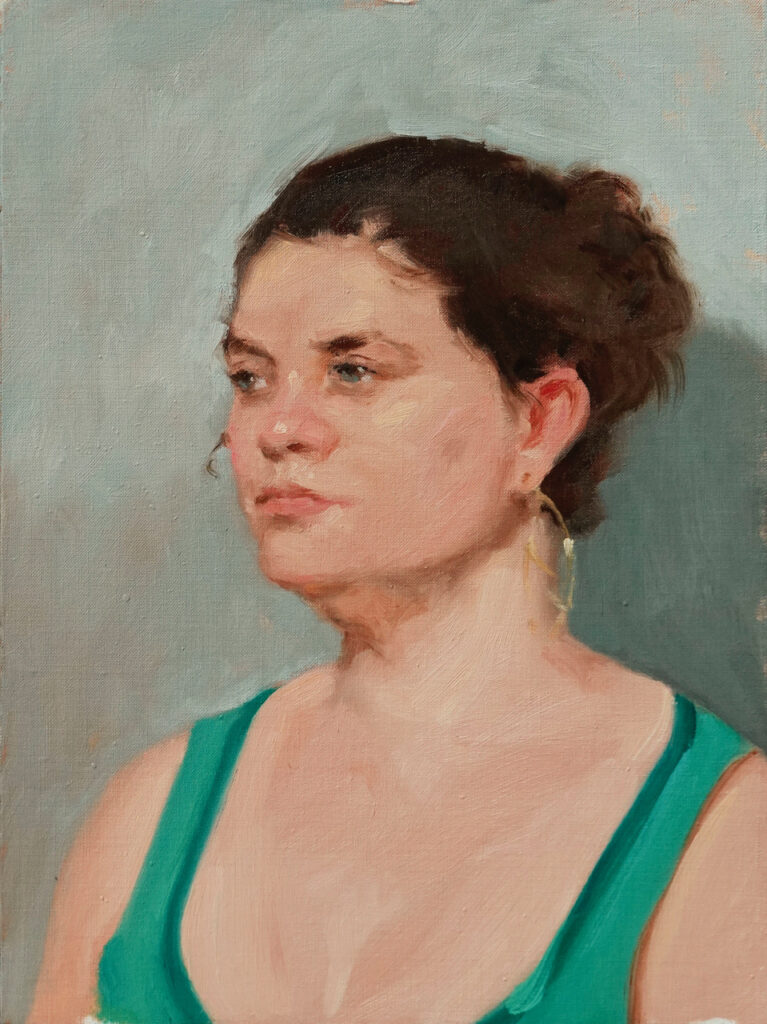
If you’re feeling like you’ve lost touch with drawing skills, or would like to improve them, you might consider joining or starting a drawing class, drawing some still life subjects, or drawing your own face in the mirror.
It may be necessary to revisit basic perspective or anatomy to understand our subjects, so that we can render them with confidence. For the figure, I like Andrew Loomis’ Figure Drawing For All It’s Worth, and there’s no shortage of information out there about basic one, two and three point perspective so that we understand things like eye level, vanishing points, ellipses etc.
I believe Norman Rockwell said his ability to draw was a little gift that he always had in his pocket that enabled him to pursue all of his ideas. It’s good to think of strong drawing skills as we draw or paint as our friend and ally, and not a weakness that we can somehow avoid for the rest of our days.
